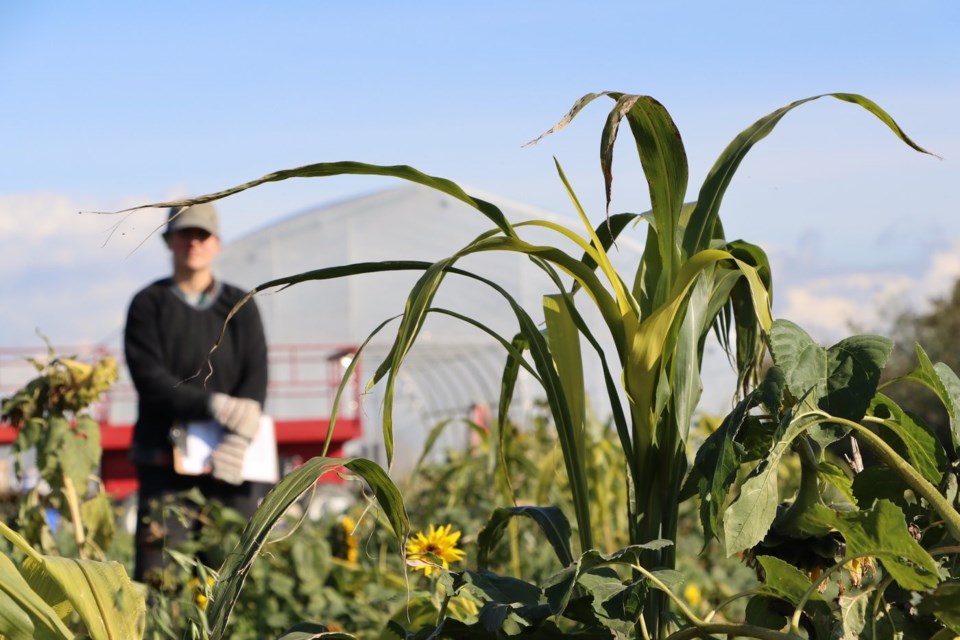More than two-thirds of the world’s fields, ranches and orchards are owned by one per cent of its farmers, according to a report released Tuesday.
Land inequality — the concentrated ownership of land — is skyrocketing globally, including in Canada and the U.S. It’s a trend driven by large-scale industrial farming and export-oriented agricultural policies with wide-ranging impacts on everything from food security to climate change.
“Farms and farmland (are) С����Ƶ bought up by investors, and the reasons are obvious,” said Kent Mullinix, director of sustainable agriculture and food security at Kwantlen Polytechnique University, who was not affiliated with the study. “People have to eat, so it’s a great investment.”
Those investments aren’t always obvious. Historically, land ownership analyses have excluded key pieces of information, such as the value of land and the degree of control a person or organization has over it, according to the report’s authors.
For instance, many farms operate under contract to agri-food corporations, giving them control over production methods and market access without explicitly owning the farm. Investors are also purchasing farmland at increasingly high rates, pushing land prices beyond the value of the crops they can produce and exacerbating farmland consolidation.
An analysis of these control mechanisms was included by the coalition of organizations behind the report — a novel technique, said Ward Anseeuw, co-author of the report and co-ordinator of the initiative. The additional data revealed that worldwide, land inequality is 41 per cent higher than previously reported through national agricultural censuses.
“These findings radically alter our understanding of the extent and far-reaching consequences land inequality has, proving that not only is it a bigger problem than we thought, but it’s undermining the stability and development of sustainable societies,” he said in a statement.
Concentrated land ownership is associated with a suite of problems, including deforestation, political and economic inequality and the degradation of rural food security, the report notes. And while land inequality is an old problem — it was a key part of many colonial governments’ policies — the authors note that since the 1980s, the problem has gotten worse.
That’s when national and international trade policies were implemented that made it easier for financial institutions and global agri-businesses to purchase vast tracts of farmland for conversion into industrialized crop production.
This land was generally purchased from small- to mid-sized family farms growing a diversity of crops for local or regional consumption. Replacing them were larger industrialized farms owned by vertically integrated companies invested from seed to sale in international commodity markets.
It’s a trend that accelerated after the 2008 financial crash, said Devlin Kuyek, senior researcher at GRAIN, an international non-profit supporting small farmers and social movements.
“At that time, there was a food price spike globally,” he said. “So (the crisis and food prices) generated a lot of interest from institutional investors who were looking for a hedge against the volatility of the stock market.”
Those investors, including several Canadian pension funds, started purchasing farmland worldwide. And with deeper pockets than most farmers, they didn’t struggle to find the land, despite policies in certain jurisdictions — including some Canadian provinces — that limit foreign farmland ownership. It’s a practice that drives land consolidation, he explained.
“Where there are small plots of land, (the investment funds) will look at places where they can aggregate that farmland and create a bigger farm … The idea is to create a big, consolidated, aggregated piece of farmland that they can have some revenue on and then eventually sell for a profit.”
Meanwhile, smaller-scale farmers producing food for regional and local consumption often struggle to make ends meet because of high farmland prices and competition from global commodity markets. It’s a pattern that is seen worldwide — including in B.C., explained Mullinix.
The province has a proliferation of small, diversified farms serving local markets, many of which struggle to afford farmland (farmland prices in the province are also driven by real estate speculation, not only agri-businesses and investments from financial institutions). There are also several large ranches and orchards producing food for Canada-wide and international markets — and not much in between.
“The farms in the middle are the ones that are disappearing,” he said.
Still, Kuyek said that Canadians have more leverage than they might think. Canadian pension funds are some of the world’s largest farmland investors and sustained pressure from the people whose money they are managing can help change their practices.
“We have an interest in understanding what’s going on with our money. If the money is С����Ƶ used to expand industrial agriculture, kick communities off their lands, destroying the future of the planet, it’s not really a good investment that way,” he said.
“But this is a new area for the pension funds, so putting pressure on them now, making them aware of the risks … it can sort of push them to hold back from stepping into that area of investment.”




